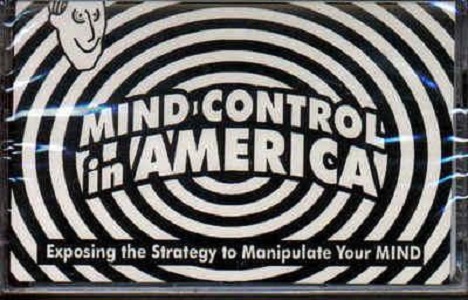"Modern media of communication have become such complex instruments that wherever they are used they do much more to people than those who administer them mean them to do, and they may have a momentum of their own which leaves the administrative agencies much less choice than they believe they have."
Lazarfleld is a gloom and doom pessimist, it seems to me. He argues that "The techniques of manipulating large masses of people is developed in the business world and from there permeates our whole culture." Are we just zombies, brainwashed to buy and consume with no will or ability to resist?
This whole idea, however, I believe to be false. Starting in the 50's and more so in the 1960's there is a voice of opposition to the "norm" with the counterculture movement you finally see a subversive backlash towards the mainstream. Beatniks of the 50's and hippies of the 60's purposely went against the grain and creativity and art, I believe, were at the heart of these movements. More counter cultures breed new worlds for self-expression: 80's punk rock or long hair metal-head, 90's with hip-hop and grunge. Not only are these musical styles, but fashion statements as well. Every era has their influential looks and styles as well as musical sounds. Art is also tied into all of these phases and movements as well.
As MJ points out in her post, it seems that Lazarsfeld calls us "pawns upon a chessboard". Slaves to fashion, as MJ has titled her post. He gives a perfect example in this excerpt of Administrative and Critical Communications Research. He points out that if you look at old footage from 10 years ago you become critical of the fashion and think it ridiculous now. However, in 10 years you'll be laughing at what you wear today. It is a prime example of the "main stream" in our everyday lives. Hair styles, clothes, furniture, automobiles: all of these relics date not only our culture but us as people.
So while Lazarfeld was commenting on his day and era, it would definitely been true of the times in which he lived. There was little in so far as subcultures or "alternative" lifestyles in the 1940's. Most of the things that went against the norm were more than likely ridiculed and belittled so if there were individuals who did have habits or practices that went against the societal norms they kept them secret, behind closed (even locked) doors.
He also makes a great point, and one I argue all the time, in that we must act as a critical student and ask questions of the media. Most importantly, "How are media organized and controlled? How, in their institutional set-up, is the trend toward centralization, standardization and promotional pressure expressed? In what form, however disguised, are they threatening human values?" This ties into a number of classroom discussions and my opinions I've shared about media conglomeration and centralized ownership, along with the gatekeeper theory and the free flow of information.
Also, I wonder how much Orson Welles' little Halloween prank in 1938 sparked this line of thinking. This article was published in 1941, not long after the incident. As proof in this writing he uses the example of anti immigration sentiment being broadcast by radio stations and government leaders and how that effects public opinion and sentiment. Like Lazarsfeld admits in the reading, there isn't much research in the effects so it's an area what warrants more research, which is exactly what he did as he helped form the Office of Radio Research along with Hadley Cantril as well as establishing four applied research institutes at different universities.

No comments:
Post a Comment